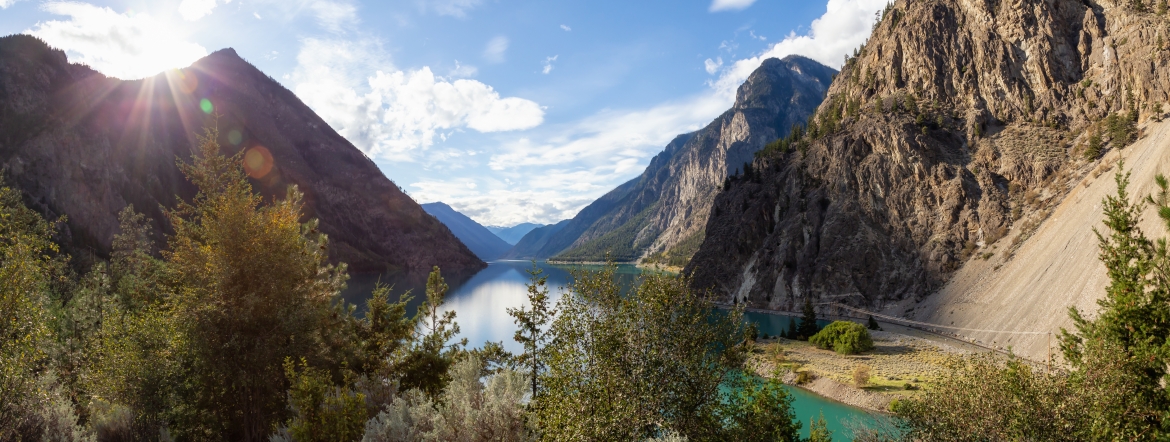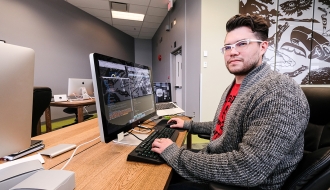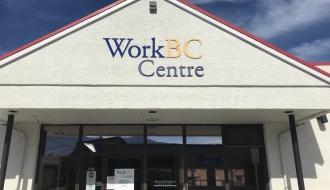St’át’imc Economic Recovery: Preserving Our History

For Marie Patrick of the Xaxli’p Nation, the word awesome comes up when she describes her experience taking the Resource Information Standards Committee (RISC) training through the St’át’imc Economic Recovery program. Developed by the Lillooet Tribal Council, and with funding from the Ministry of Post-Secondary Education and Future Skills, the program included courses on environmental field skills and archaeological culturally modified trees (CMT) inventory— both of which Marie took.
The Resources Information Standards Committee (RISC) training

was overseen by the BC Association of Professional Archeologists. They teach basic archeological site and CMT identification, survey and recording skills.
The St’át’imc course included a trip to Keatley Creek, an unusually large prehistoric pit-house village site located on the terraces of the Fraser River, about 20 kilometres upstream from the town of Lillooet. It’s estimated that human occupation on the site goes back as far as 7,000 years.
“Seeing the impressions of the pit houses was pretty awesome,” describes Marie. She also marvels at learning to identify — and then finding — objects such as obsidian, carved bone, arrowheads and bird beads. The latter are intricately carved beads made from the tiny, hollow bones of birds.
“Archeology work definitely gives me a greater sense of connection to my culture and history,” Marie says. “It’s awesome that they were able to bring those kinds of courses right to us.”
But how are archeological studies connected with economic recovery? Yvonne LaRochelle, Program Manager of the Lillooet Tribal Council’s Community Adult Learning Centre, explains that much of it has to do with a long-term settlement agreement that the St'át'imc Nation signed with the province and BC Hydro in 2011.
The St'át'imc Nation is made up of 11 First Nations communities in a territory surrounding the towns of Lillooet, Pemberton and Whistler. That territory also includes three dams, two reservoirs, four generating stations, 15 transmission circuits totaling approximately 850 kilometres of transmission lines, and 160 kilometres of access roads.
Among other things, the agreement calls for long-term environmental mitigation plans to help restore land, water, fish, wildlife and vegetation, as well as a heritage and culture plan to preserve, protect and promote St’át’imc culture.
Yvonne explains how the pandemic worsened an already depressed economic situation in the region. However, BC Hydro’s important operational needs in this area mean that trained environmental and construction workers will be required. To help support these operational requirements, the training program included a Construction Safety Officer certificate course. The question of how to "create full-time meaningful employment — like fuel management in the winter — so we don’t lose [trained technicians] every year” is an issue this program hopes to solve.
The devastation of recent flooding and forest fires also heightened awareness of the need for safety and security in the territory — for both people and for the environment. Therefore, the program also offered swift water rescue certification and a forestry field study program.
Yvonne also adds that the tribal council’s next agenda item is on how they may be more proactive with forest fire prevention. She says she hopes to see programs developed for Indigenous guardianship and territorial patrol. And while most of the training offered by the St’át’imc Economic Recovery program was entry-level, she sees it as a steppingstone to lead participants toward more responsible positions.
“It’s been really beneficial and helpful to our community,” she adds. “Giving people the opportunity and support to create good outcomes lets them see ‘I can do this’ and maybe go on to other training.”
That’s certainly the case for Marie. She’s currently enrolled full-time in the Environmental Resources Technology diploma program at Nicola Valley Institute of Technology, and she’s thinking about archeology training down the road. Pretty awesome, indeed.
Learn more about education and career resources for Indigenous Peoples — from students to business owners.
The Ministry of Post-Secondary Education and Future Skills has invested $15 million to help Indigenous communities manage the economic impacts of COVID-19. The skills training funding goes to Indigenous training partners throughout B.C. to address COVID-19 recovery in the workforce.






